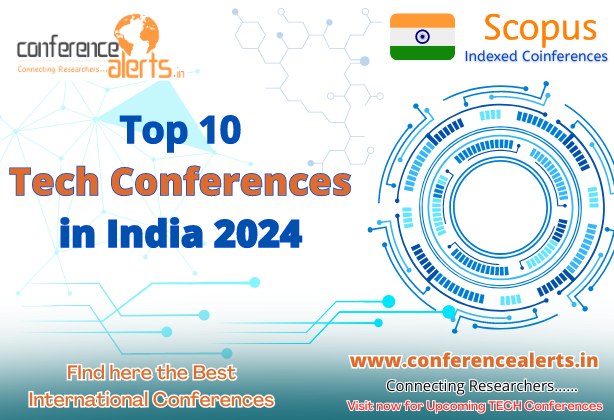What is Primary Research? Primary Research Meaning
Primary research is data which is obtained first-hand. This means that the researcher conducts the research themselves or commissions the data to be collected on their behalf. Primary research means going directly to the source, rather than relying on pre-existing data samples.
This type of research is particularly relevant where the data collected needs to be specific to the context. For example, a company may perform primary market research to discover customer perceptions of their brand. This could not be collected from any existing data source as it is unique to the business.
Primary research can also help to position a person or company as an authoritative figure in the field. The research may then be quoted by other authors, who reference the original researcher as the source, further increasing their position. However, the researcher retains full control over the data, as the data owner.
Also Read: What is the Highest Impact Factor Journal in Education?
When to Use Primary Research?
Selecting the appropriate research method is a critical decision that hinges on the objectives of the study. Primary research is particularly beneficial in scenarios where recent, specific data is required to address a unique problem or question. This method is ideal for:
Academic Research
In the realm of academic research, primary research is indispensable when fresh insights or novel data are necessary to advance knowledge or contribute to scholarly debates. This type of research is crucial for:
- Exploring New Theories or Models: When a researcher aims to develop or validate a new theory, firsthand data collection is essential. For instance, a psychologist conducting experiments to test a new cognitive behavioral therapy model for anxiety would rely on primary research to gather data on the therapy’s effectiveness directly from participants.
- Filling Knowledge Gaps: Primary research helps fill gaps in existing literature. If a historian is studying a less-documented cultural practice, interviews and observational studies can provide new insights that no secondary sources could offer.
- Improving Research Rigor: Utilizing primary data enhances the rigor of academic studies. By collecting and analyzing original data, researchers can draw conclusions with greater validity, offering substantial contributions to their fields.
Market Research
Market research utilizes primary research extensively to understand consumer behaviors, preferences, and trends. This method is particularly advantageous for:
- Product Development: Before launching a new product, companies often use surveys and focus groups to gather consumer feedback on the product concept, design, and functionality. For example, a beverage company considering a new flavor profile might conduct taste tests and focus groups to refine the product based on direct consumer feedback.
- Customer Satisfaction: To assess and enhance customer satisfaction, businesses frequently employ primary research methods such as customer satisfaction surveys and in-depth interviews. This allows companies to receive real-time feedback and quickly implement changes to improve customer service.
- Segmentation and Targeting: Through interviews and surveys, companies can identify customer segments and understand their specific needs and preferences. This segmentation enables more effective targeting of marketing efforts and product customization.
Policy Formulation
Primary research is critical in policy formulation, particularly when policies need to be based on up-to-date and specific data regarding public opinion, needs, and conditions. Primary research methods such as public opinion polls and field observations are commonly used:
- Understanding Public Needs: Governments and organizations use primary research to gauge public opinion on various issues, from healthcare to urban development. For instance, before implementing a new public transport policy, a city council might conduct surveys to understand residents’ preferences and concerns regarding transit options.
- Evaluating Policy Impact: After a policy is implemented, primary research is used to evaluate its effectiveness. This could involve collecting data on user satisfaction, policy usage, and public perception through direct feedback mechanisms like online polls or public forums.
- Refining Policies: Continuous primary research is necessary to refine and adjust policies based on direct stakeholder feedback. This dynamic approach ensures that policies remain relevant and effective over time.
In each of these contexts, primary research not only provides the specificity needed for tailored insights but also offers the flexibility to adapt to emerging data and trends, thereby enhancing the overall impact and effectiveness of the research efforts.
Types of Primary Research
There are many ways of gathering primary research. The most suitable method will depend on the questions you want to answer and the problem you’re trying to solve. The most common primary market research methods are interviews, surveys, focus groups and observations.
Interviews
Interviews take the form of a one-to-one or small group question and answer session, which can be conducted over the phone or in a face-to-face environment. Interviews are most useful where a large amount of information needs to be collected from a small sample of subjects. Interviews are often used to obtain information from an expert about a specialist topic. This type of research is highly personal, so follow-on questions can be asked to ensure clarity.
Surveys
Surveys are most frequently conducted online using paid or free survey tools and offer a convenient and cost-effective solution where a response is required from a larger population. Questions are pre-written, offering the respondent little flexibility if their answer doesn’t fit (making functionality such as skip logic essential) and response rates can be variable. The length of a survey is a delicate balance: if a survey is too long, participants may get bored and leave the survey incomplete. However, if the survey is short, not enough data will be collected to form a full picture.
Focus groups
Focus groups are used to collect data from a small group of people who are often subject matter experts in the topic of research. Discussion is initiated between the group members to discover their thoughts. This method is commonly used by businesses to gain insight into niche markets and learn about their customers.
Observations
Observations are carried out impartially, by simply observing an event and taking organised notes. In this method, there is no direct interaction between the researcher and the subject. This method removes the potential bias which could be encountered during an interview or survey as the encounters observed are genuine reactions. Observations can be carried out by camera or by a trained observer. This method is commonly used by toy manufacturers when testing their products on children.
Advantages and Disadvantages of Primary Research
Primary research has many advantages, although it is not the most appropriate type of research for every situation. It is important to consider the individual requirements before deciding on the most appropriate research method for the situation.
Advantages of Primary Research
Primary research methods offer a targeted approach to market research. This allows specific issues to be addressed, keeping the research completely relevant to the objectives and scope of the project. This means that the research is specific to the individual market, rather than the mass market.
This type of research also allows the marketer to have complete control over the methodology used, along with the representative sample size and the sample selection process. This helps to further improve the relevancy of the research to the person or organisation.
Secondary research is often outdated and may no longer be accurate for the market the researcher is trying to target. Primary research guarantees that the information collected is up-to-date and relevant, enabling accurate trends to be revealed.
Primary research also allows the person or organisation to control ownership of the data. They may choose to release the information to enhance their position as an authority in the field, or they may choose to keep the data private to avoid giving competitors an advantage.
Disadvantages of primary research
The main disadvantage of conducting primary research is the cost involved in the process. Secondary research can often be collected without cost, whilst primary research is more involved, increasing the cost of obtaining it.
Primary research can also be time consuming to carry out, especially if a large sample size is required. The time required to effectively plan primary research, carry it out and analyse the data is much greater than the time taken to conduct secondary research.
Inaccuracy must also be accounted for. Respondents may be biased based on their previous experiences with an organisation or may not fully understand a question on a survey, leading to misleading or inaccurate responses.
FAQs
What is primary research?
Primary research refers to the process of gathering new, firsthand data directly from original sources, typically through methods such as surveys, interviews, observations, or experiments.
Why is primary research important?
Primary research allows researchers to collect specific and accurate data tailored to their particular study, ensuring the information is current and relevant to their objectives.
What are the common methods of primary research?
Common methods include surveys, interviews, focus groups, observations, and experiments, each offering unique ways to collect valuable data.
How do surveys contribute to primary research?
Surveys provide a systematic way to collect data from a large sample of people, making it easier to analyze trends, opinions, and patterns.
What is the difference between primary and secondary research?
Primary research involves collecting new, original data directly from the source, whereas secondary research involves analyzing data that has already been collected and published by others.
Can primary research be qualitative or quantitative?
Yes, primary research can be both qualitative (focused on understanding experiences and opinions) and quantitative (focused on numerical data and statistical analysis).
How do I design an effective survey for primary research?
An effective survey should include clear, concise questions, a logical structure, and a variety of response options to gather accurate and diverse data from participants.
What are the ethical considerations in primary research?
Ethical considerations include ensuring participant confidentiality, obtaining informed consent, and minimizing any potential harm or discomfort to participants.
How can I analyze data from primary research?
Data from primary research can be analyzed using statistical methods (for quantitative data) or thematic analysis (for qualitative data), depending on the type of data collected.
How can I ensure the validity and reliability of my primary research findings?
Ensuring validity involves accurately measuring what is intended to be measured, while reliability is about ensuring consistent results across different trials or participants. This can be achieved through careful planning, standardized procedures, and proper sampling techniques.




